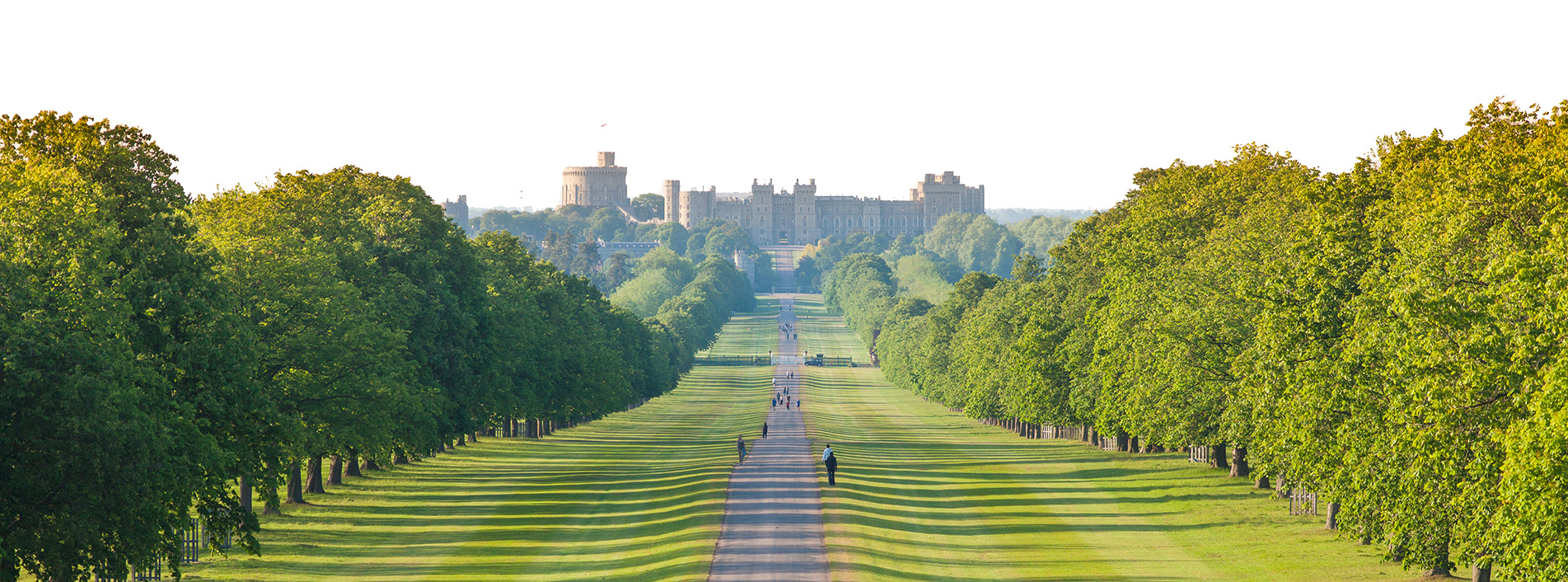
The Story of The Long Walk

Published by
Windsor Great Park
Feb 7 2025
Share this article
The Long Walk was first envisioned by King Charles II in the 17th century.
During the 17th century, avenue planting was at the height of fashion and The Long Walk boasted 2.5miles/4km of elm trees, inspired by the elm avenues of France.
Stretching between Windsor’s Cambridge Gate and Snow Hill (where stands Richard Westmacott’s statue of King George III, known as the Copper Horse), The Long Walk provided King Charles II perfect access to the Park from Windsor Castle, with The Long Walk passing into Windsor Great Park through ‘The Doubles Gates’.
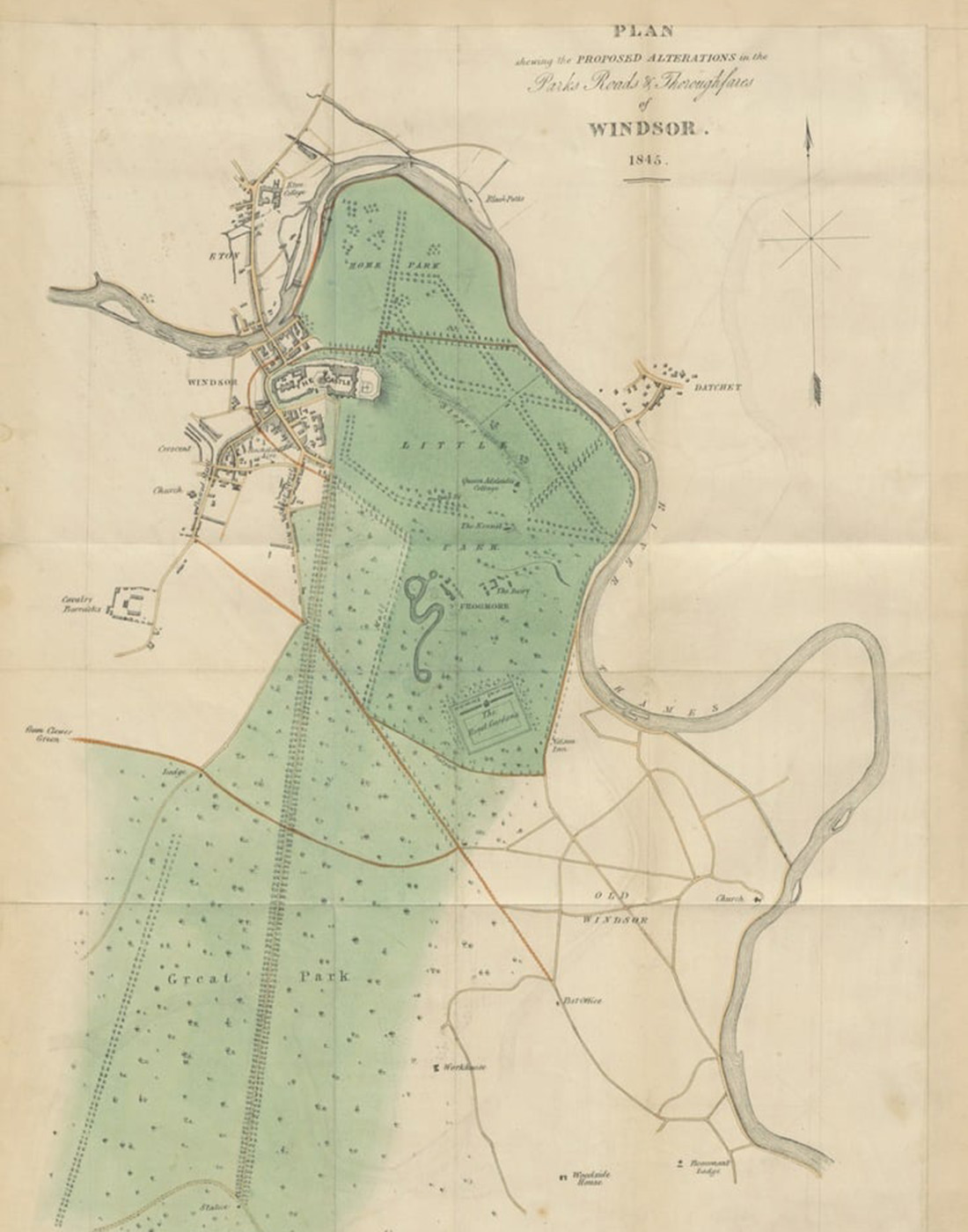
Map of The Long Walk. Parks and Grounds of Windsor Castle, 1845. Robert R Tighe
The creation of The Long Walk
On 12 May 1680, a Royal Warrant declared the commencement of work on The Long Walk, with the commission of the acquisition of land appointed on 27 July 1680.
Subsequent years were then devoted to re-obtaining the land that would mark The Long Walk’s route. In total, almost 28 acres of land were acquired, split amongst 25 separate holdings, with the largest at nearly 3 acres/1 hectare.
Once planted, The Long Walk consisted of a double avenue of elm trees (Ulmus procera) supported with oak stakes, totalling at 1652 trees, spaced 27ft/8m apart. The width of the avenue was 150ft/46m between the inner rows and 210ft/64m between the outer rows.
Moreover, the grass on the avenue was preserved for hay to feed the deer of Windsor Great Park through the winter months.
There is some debate, but it is generally thought that The Long Walk avenue was complete by the time that King Charles II passed away in February 1685.
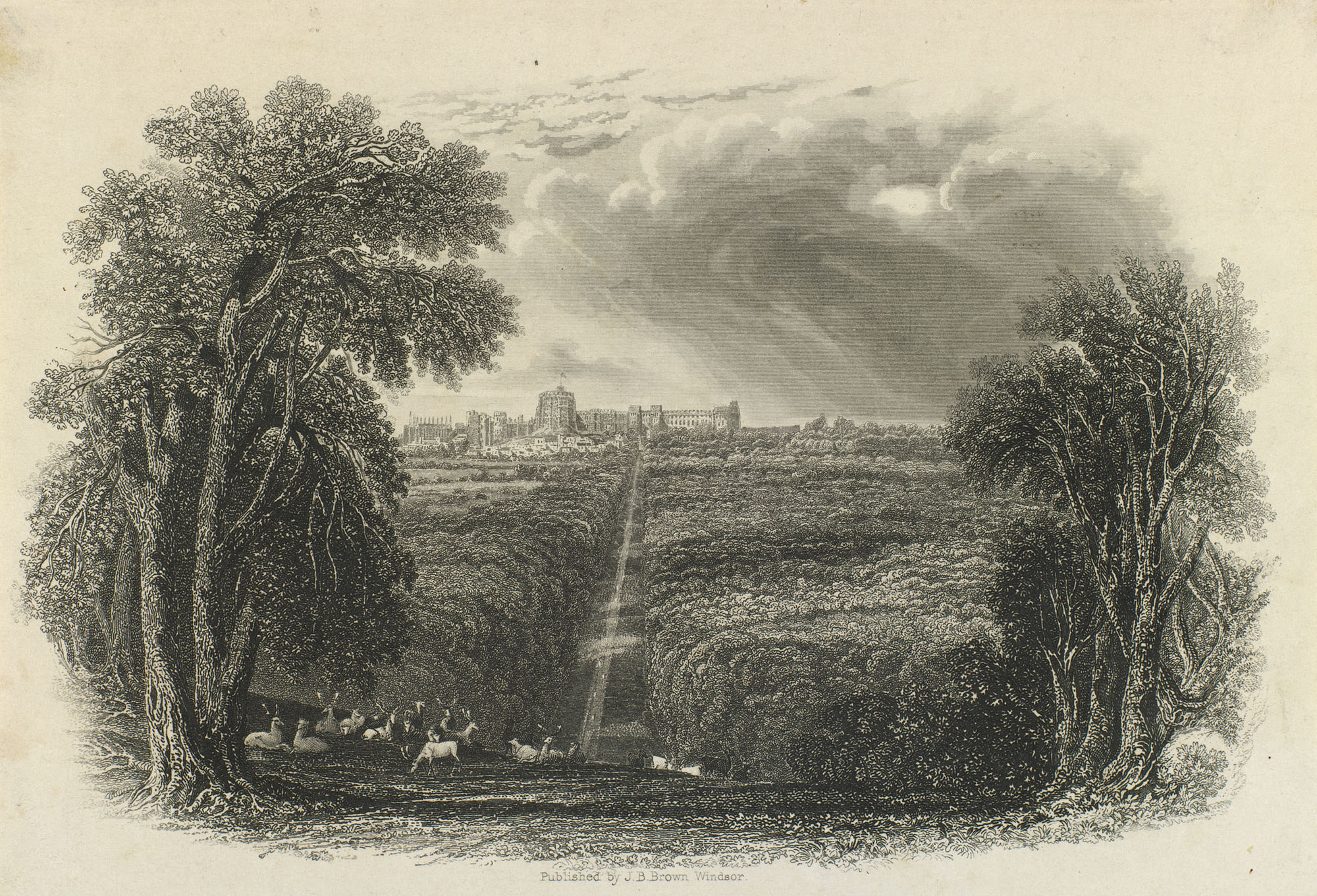
Royal Collection Trust/© His Majesty King Charles III 2022
The development of The Long Walk
1702 saw renewed interest in The Long Walk with the accession of Queen Anne.
In 1710, the construction of a gravel pathway was commenced down the centre of the avenue. Queen Anne enjoyed travelling around her parks in her carriages, and so the prospect of being able to travel between Windsor Castle and the Great Park in comfort, rather than simply on horseback through the grass, was largely appealing.
The Long Walk then remained rather unchanged until the middle of the 19th century. Unfortunately, by 1859 the avenue’s plantings were showing signs of deterioration and the Duke of Bedford (Mr Ralph Sneyd), The Honourable Charles Gore, and Mr John Clutton submitted plans to Prince Albert, the Prince Consort for approval to future-proof The Long Walk; oak (Quercus robur) was to become a substitute for elm between The Double Gates and Snow Hill, and fresh elm trees were to replace the existing elms between Windsor Castle and The Double Gates.
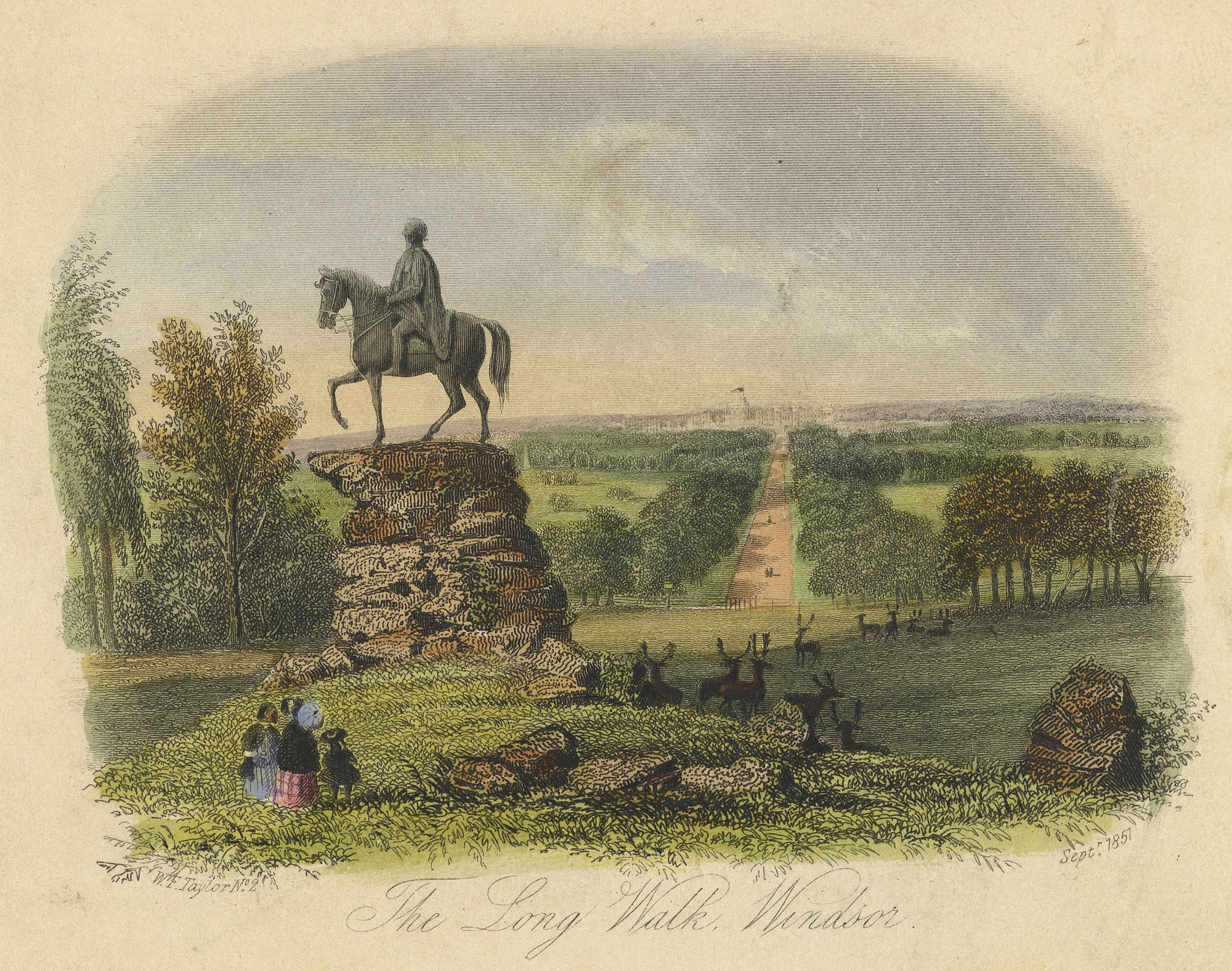
Royal Collection Trust/© His Majesty King Charles III 2022
Modern Britain
Unfortunately, in the 1920s Dutch Elm Disease (caused by the fungus Ophiostoma novo-ulmi) arrived in the UK, killing approximately 10-40% of elm trees. Although this variation of the disease retreated naturally, a more deadly resurgence arrived from Canadian imports in the 1960s.
Consequently the 20th century saw a major replanting of The Long Walk. By 1944, the last of the elm trees had been felled due to age or Dutch Elm Disease and there was a subsequent major replanting.
Initially the plan was to plant alternate London plane (Platanus x hispanica) and horse chestnut (Aesculus hippocastanum) trees, with a view to retaining whichever species thrived best. However, both species grew successfully and so, in 1979, the trees were thinned selectively for the healthiest specimens.
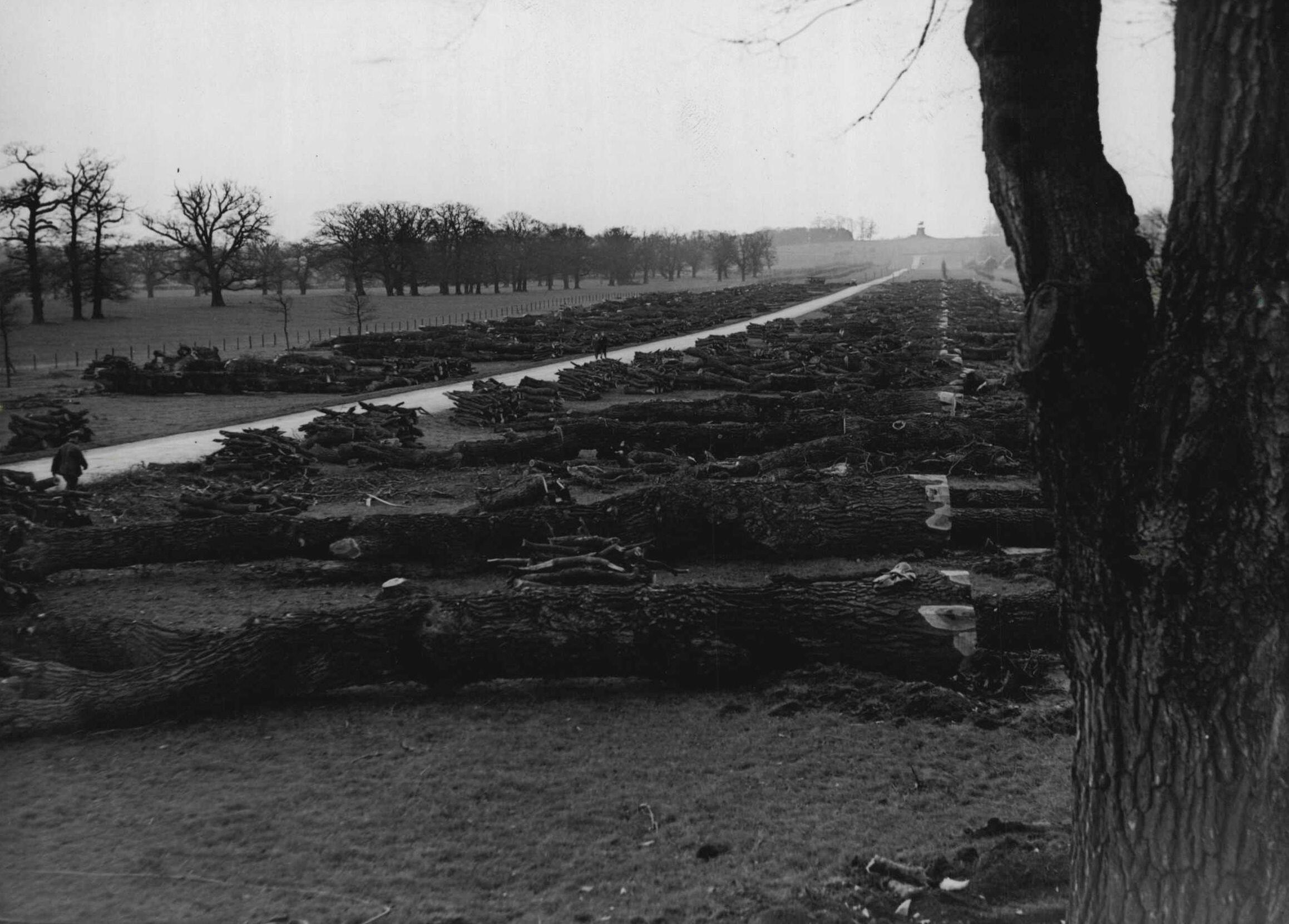
Felled elm trees on The Long Walk, 1944
Looking toward the future
The Long Walk is an impressive legacy to the British monarchy and an iconic attribute to the nation.
With only two major plantings spanning The Long Walk’s 343 year history, it is important that care is taken to preserve this iconic double avenue of trees.
Looking to the future, climate change is clearly going to be a factor with potential re-plantings to conserve The Long Walk avenue.
Invasive pests such as horse chestnut leaf miner already pose a direct threat to The Long Walk’s horse chestnut trees, whilst factors such as reduced rainfall and rising summer temperatures will be important considerations for future tree selections.
The existing London plane trees appear to be a sturdy choice, resistant to urban pollution and with an ability to recover from common diseases affecting plane trees (e.g. plane anthracnose). However, a monoculture of London plane ought to be avoided as a precaution for potential invasive pests and diseases such as plane wilt (Ceratocystis platani) which is not yet present in the UK but is fatal to plane trees 2-5 years after infection.
Thus, retaining diversity of tree genera in future re-plantings of The Long Walk will be essential to its longevity as our climate continues to fluctuate. With enough research and consideration, the story of The Long Walk will continue to grow and evolve, over many more decades to come.
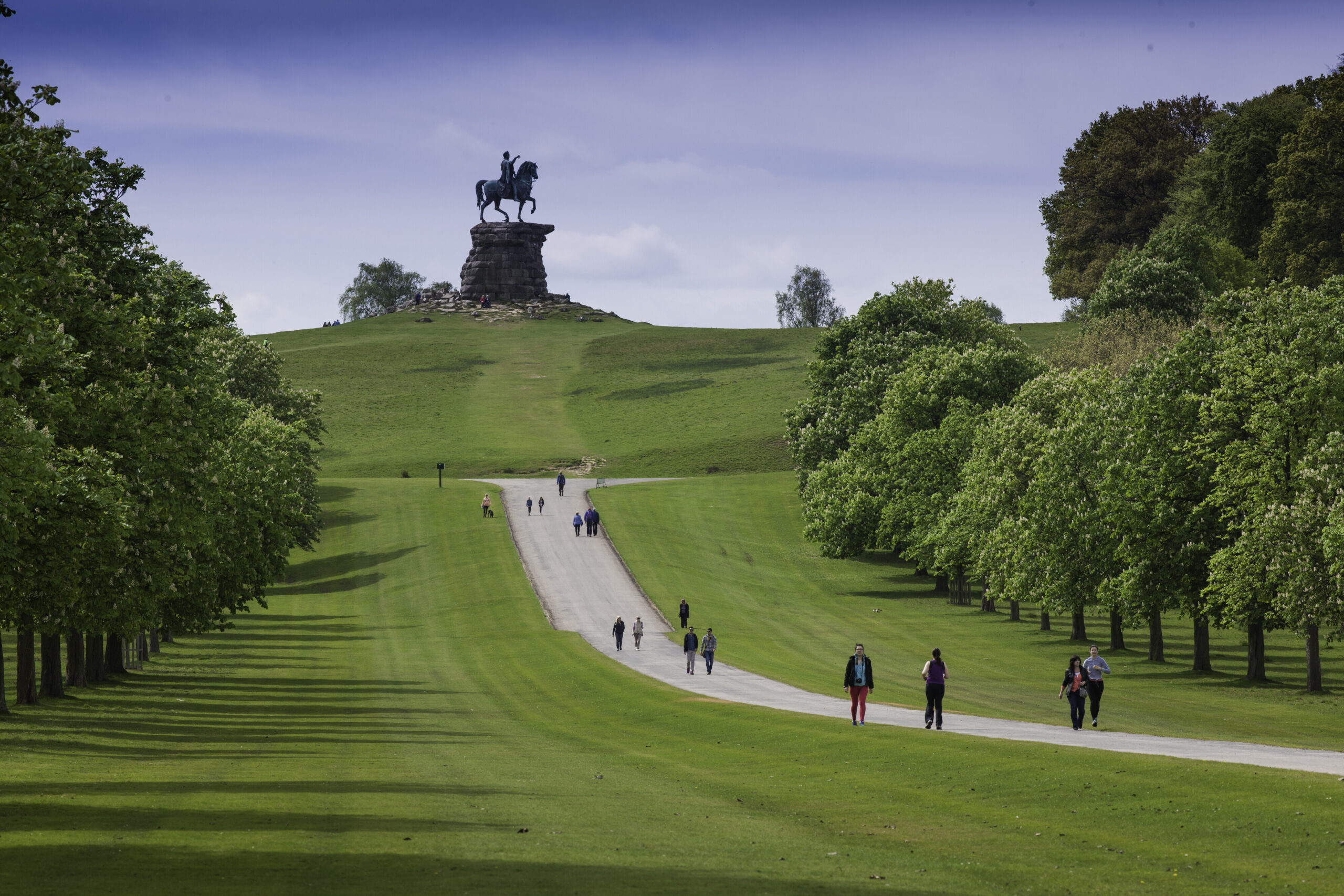
The Long Walk
This article was written by Chloe Knight, who completed her third year of her PGG qualification (Professional Gardeners’ Guild) at Windsor Great Park in both The Savill Garden and Valley Garden, 2023 – 2024. In her first and second years, Chloe studied at Godinton House in Kent, and The Garden House in Devon.
Kings and Queens from Charles II
| Monarch | Dates of reign |
|---|---|
| Charles II | 1660 – 1685 |
| James II and VII of Scotland | 1685 – 1688 |
| William III and Mary II | 1689 – 1702 and 1689 – 1694 |
| Anne | 1702 – 1714 |
| George I | 1714 -1727 |
| George II | 1727 – 1760 |
| George III | 1760 – 1820 |
| George IV | 1820 – 1830 |
| William IV | 1830 – 1837 |
| Victoria | 1837 – 1901 |
| Edward VII | 1901 – 1910 |
| George V | 1910 – 1936 |
| Edward VIII | June – December 1936 |
| George VI | 1936 – 1952 |
| Elizabeth II | 1952 – 2022 |
| Charles III | 2022 – present |
Bibliography
Stanley A Williams, Official Guide to Windsor Castle, the Town and Neighbourhood of Windsor (1939).
William Menzies, Windsor Park and Forest (1904).
Andrew Fielder, Windsor Great Park: A Visitor’s Guide (2010).
JB Pyne, Windsor with its Surrounding Scenery (1838).
Robert R Tighe, Parks and Grounds of Windsor Castle (1845).
Jane Roberts, A Royal Landscape: The Gardens and Parks of Windsor (1997).
Share this article

